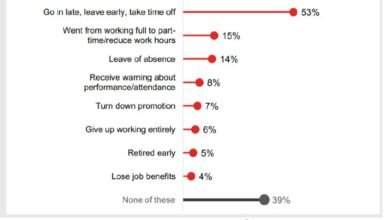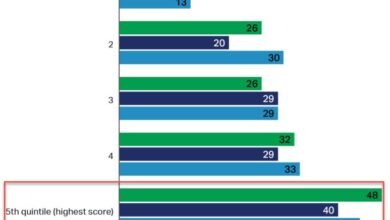
Source | www.interest.com |
Guide to affordable child care when re-entering the workforce
Many new parents are concerned about child care expenses when returning to work after having a new baby.
Leaving your baby for the first time can be difficult, but finding a loving, qualified provider can ease your anxiety. Unfortunately, many of the best child care providers have long waitlists or come with a hefty price tag — or sometimes both.
The stress of compromising on the quality of care or of figuring out how to afford a hefty child care bill can add to the concern parents face when kissing their babies goodbye and heading off to work. The lack of affordable, quality child care forces 13% of mothers with children ages 5 and under to leave their jobs to care for their children themselves.
In extenuating circumstances, like the ones faced during the coronavirus crisis, finding child care can be an even more complex topic. As states start to reopen businesses, some parents are returning to work. However, many are finding their former child care is no longer available, complicating things even further.
Finding the right child care can be challenging, but understanding the real costs of quality care, as well as learning tips for leveraging your savings to afford the best care for your new baby, will help you return to work with more confidence and less financial stress.
The impact of COVID-19 on child care
Many child care providers are struggling to stay open in the wake of COVID-19 — due, in many cases, to the difficulties with balancing increased expenses and mandated lower enrollment. The new regulations have reduced the number of children a provider can care for, which is putting some daycares out of business. That leaves a limited number of available child care slots, making it increasingly difficult for new parents to find safe, affordable, quality child care.
As with most businesses, child care centers that are reopening post-COVID lockdowns are required to have reduced capacity, which means most providers can only have nine children for every teacher. Add to that the new sanitization regulations and necessary personal protective equipment for all staff and child care providers are looking at significantly increased expenses with drastic cuts to revenue. Increased expenses and lower enrollment can make it hard for an already struggling industry to stay alive. Without a government bailout, an estimated 4.5 million child care slots could be lost.
The Health and Economic Recovery Omnibus Emergency Solutions (HEROES) Act currently allocates a $7 billion bailout to child care providers. If passed, the $7 billion from this act only stabilizes the child care industry for three weeks. Therefore, a $50 billion bailout has been proposed, since the child care industry needs $9.6 billion a month to keep it from shutting down ($50 billion will carry it for five months).
Finding child care amidst the COVID-19 pandemic will be challenging, with reduced child care spots and extended waitlists in most areas. To decide what type of child care will fit your family best, consider the size of the COVID-19 outbreak in your area. Be sure the provider you choose follows all the regulations set forth by the Centers for Disease Control and Prevention. Also, keep in mind, some providers are not allowing parents inside the building and have suspended all tours of the facility.
Challenges of child care
When choosing the right provider for your family, there are a few important issues to consider: the cost of care, the quality of care, the type of care you want and the availability of that care.
Cost
In a 2016 poll among U.S. parents, the most common challenge stated in finding child care was cost. On average, child care costs about $250 per week, or $13,000 a year. Infant care costs more than college in 33 states, without the benefit of saving 18 years for it.
Determining what type of child care you want
Choosing what type of child care best fits your family at least partly depends on your work schedule. Do you work part-time, nights, or from home? Every parent has different needs, and thankfully there are child care options to accommodate them. Working from home and finding child care may seem counterintuitive to some, but just like all members of the workforce, remote workers have professional requirements or goals that they plan to meet. According to the Bureau of Labor Statistics, in 2017, 23% of US workers did some amount of their work from home.
Attending virtual meetings and achieving your job requirements is difficult if you also have to watch over your children at the same time. Just like you can’t always predict how your child will behave, you don’t know what the workday will hold. That’s why juggling both doesn’t have to be a reality.
There are many child care options to choose from, from hiring a nanny to finding a preschool. Each option provides a different level of care and comes with its price tag. Consider each type of care’s pros and cons to help you find the best match for your family and finances.
Nanny
A nanny offers full-time or part-time care for your child in your home. Some nannies live in your home with you, and others do not. What makes a nanny an excellent choice is that they can better meet your scheduling needs and are available to work long, odd hours. Plus, most nannies also offer additional household services, such as light housekeeping, running errands and driving children to their daily activities. A nanny costs an average of $19 an hour, but you will also need to factor in the cost of payroll taxes, since a nanny is considered an employee.
Nannies often do not have the training that day care providers have, although you can find some who are certified in CPR and have taken child development classes. A legitimate CPR certification can nowadays be obtained online without the need for scheduled in-person classes. This provides easier training for future nannies who are also required to attend other programs simultaneously. They also tend to focus less on educational activities and social development than a day-care center would. On the other hand, a nanny can give your child more one-on-one attention while creating a stronger caregiver attachment.
When hiring a nanny, look for someone patient with children and reliable. Other good factors to consider are education and experience. Nannies are not regulated, but you do want to see evidence that the nanny takes the role of child care provider very seriously.
Daycare
Daycare is a common choice for parents because it offers full-time or part-time care during regular business hours. Most daycares accept children from six weeks old to around ten years old, or when the child is old enough to be home alone legally.
There are two types of daycares: in-home family daycares and daycare centers. In-home daycare is child care offered in the provider’s home. The average cost for in-home daycare is around $159 a week, or $7,627 a year.
Daycare centers often resemble a preschool setting, and cost around $248 a week for an infant — or about $11,896 a year.
There are a few things to consider when choosing between an in-home family daycare and a daycare center. Daycare centers tend to be more structured, with a focus on education and social development. However, some in-home family daycares can also have a similar structure and focus, depending on the provider. In-home family daycare providers can give your child more individualized attention than a daycare center can, simply because there are often fewer children.
There are several things to consider when choosing a daycare. Once you check off the basics, such as safety, environment and quality of care, it is important to get a feel for the culture. Does it feel warm and welcoming to you? Are the children happily engaged? Do the providers truly seem to enjoy interacting with the children? Use questions like these to guide your research as you explore daycare options near you.
Preschool
Preschool is generally for three to four-year-olds. Hours vary; some provide care for just a couple of days a week, and some provide care for the full week. You can find half-day and full-day programs. Preschool settings are highly structured, with a focus on education and socialization.
Some preschools are free, depending on the setting. Otherwise, preschool fees are similar to daycare centers, averaging around $4,460 to $13,158 per year, or $93 a week to $275 a week.
Early childhood education programs
Early childhood programs promote school readiness of children from birth to five years old. They are generally for lower-income families, and you can find them located within child care centers, public school settings, and sometimes in home-care settings.. These programs are free to those who are eligible.
Child care availability
The majority of families use child care centers because they are the most widely available choice and the quality of care is pretty good for what you pay. In a 2016 poll amongst parents, daycare centers rated second in quality of care, just behind relative care. Because of this, day care centers fill up very quickly.
Day care centers can typically only care for three to four infants and three to six toddlers for every trained adult. This limits how many new babies centers can take on. The waitlists are long and move slowly, as children need to age out before space becomes available.
If you are pregnant or trying to get pregnant, you need to start searching for daycare now. The faster you get on a waitlist, the better chances you have of landing child care.
It’s also good to note a lot of centers require a holding fee or a deposit. It may or may not be refundable, but some places may apply it to the first month of care. The fee will vary, costing anywhere from $100 up to half the cost of filling the spot.
Location of child care
Another obstacle to overcome when choosing child care is the location of that care. Finding child care that’s located in close proximity to your home or work is ideal, especially in cases where you may need to get there quickly, like when a child becomes sick.
You may also want to consider the overall setting of where your child receives their care. For example, a daycare located in a residential setting versus an urban setting can provide different types of benefits and opportunities, depending on what’s important to you and your family.
Costs of child care
Child care puts a financial strain on a lot of young families. In fact, 31% of parents report child care has posed a financial burden and four in 10 parents say child care is not affordable.
The U.S. government defines “affordable” child care as consuming no more than 7% of a family’s income. Yet, the average family spends 10% of their income on child care, with nearly half of all American families spending 15% or more.
Lower-income families spend a much higher percentage of their income on child care. Young adults starting their families often fall into this category because young adults are often just starting their careers, so they are not making as much as their older counterparts. These young parents are often also paying off college debt and buying houses when they start their families, so money gets tight.
Infant care costs more than older children because of the higher level of care required. Understandably, the more children you have in care, the higher the cost becomes, although some providers will offer a sliding fee or a discount for additional children.
A big challenge many parents find themselves facing is minimums. For example, parents often have to pay a set price, whether their child is there or not. If a child is sick at home or not in care that day, parents still pay.
The cost of child care continuously goes up, too, which adds to the problem. Two-thirds of parents say they are spending more on child care currently than they did the previous year. In fact, the cost of child care has consistently increased almost every year since 2014.
Republished with permission and originally published at www.interest.com






